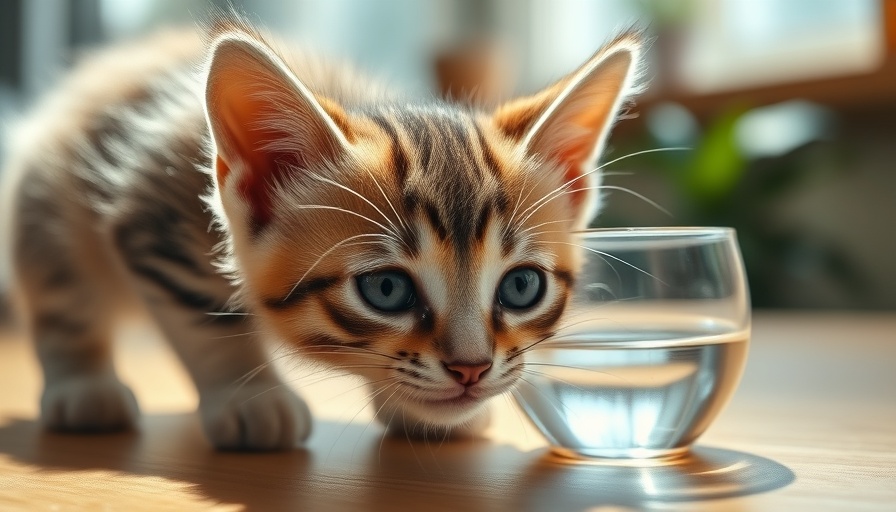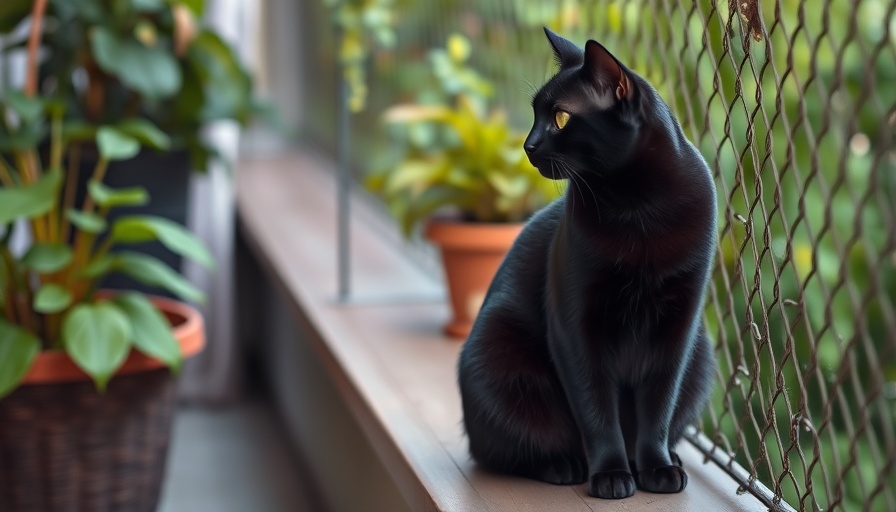
Why Does My Cat Prefer My Water Cup?
As pet parents, we often create the most comfortable and enticing hydration spaces for our furry friends, investing in stainless steel bowls and even fountains that mimic a fresh stream. Yet, despite our best efforts, many cats seem to gravitate towards drinking from our water cups. This quirky behavior can leave us puzzled and even a little grossed out. It's essential to understand the reasons behind it, as our cats' choices could reveal their individual preferences or, in some cases, health concerns.
The Quest for Freshness: Does Water Temperature Matter?
Cats are naturally finicky creatures, and they often have strong preferences regarding their water. If your cat is opting for your clean water cup over their own bowl, they may be seeking the freshness of newly poured water or the specific temperature they prefer. Many cats enjoy cool, fresh water, and if their bowl sits stagnant for too long, they might find your cup’s contents more appealing. Refill their bowl regularly, and consider exploring options like water fountains that keep hydration fresh and flowing.
Hydration Habits: Watch for Health Changes
It's crucial for pet professionals to be aware that a cat's sudden interest in drinking from unusual places, like a human water cup, can sometimes indicate health issues. Increased thirst can signal conditions such as diabetes, kidney disease, or hyperthyroidism. If your cat exhibits unusual drinking behaviors, it may be beneficial for veterinarians and pet nutritionists to evaluate their overall health. Keeping track of these changes can help in diagnosing potential problems early.
Creating the Perfect Hydration Station
Considering location is vital in your cat's hydration preferences. Cats generally dislike having their food and water bowls close together. Placing additional bowls around the house, especially in high places where they feel secure, may entice your kitty to drink from their designated bowl rather than your cup. Advocacy for proper pet hydration involves understanding these subtle environmental needs and adapting our spaces accordingly.
Your Cat's Preferences: Exploring Bowls and Fountains
When investing in pet accessories, such as feeders or fountains, be aware that your cat's preferences may differ from the latest trends. Evaluate various shapes, sizes, and functionality of bowls. Some cats may prefer wide bowls to avoid whisker fatigue, while others may enjoy the novelty of a fountain that simulates running water. Engaging with groomers and pet accessory developers can pave the way for innovative hydration solutions that cater to your pet’s unique tastes.
Understanding Your Cat’s Behavior through Emotional Context
Cats can also be quite social and may seek out their owners when thirsty for affection and attention, not just water. Observe if your cat is drinking from your cup when they seek companionship. This behavior may signify a desire for closeness, confirming the strong bond cats have with their owners. Pet trainers and behaviorists can provide insights into how best to connect with our feline friends during these moments.
Common Misconceptions About Pets and Hydration
As pet parents, we often fall prey to misconceptions about our cats' drinking habits, such as the belief that cats instinctively know how much water they need. However, this can vary based on activity levels, temperature, or even diet. It's crucial for pet food manufacturers and nutritionists to help educate owners on how food, especially dry kibble, can affect fluid intake.
Main Takeaways for Pet Professionals
Understanding why your cat drinks from your cup rather than their bowl goes beyond mere annoyance. It provides insight into their hydration needs and preferences. By creating an ideal hydration station, paying attention to health changes, adapting to their preferences, and understanding their emotional context, veterinarians, pet parents, and advocates can ensure our feline companions remain well-hydrated and happy.
Ultimately, identifying ways to improve your cat's drinking habits translates into better overall health and well-being. It may involve trial and error, but with observation and adjustments, you can create a hydration experience that both you and your cat appreciate.
 Add Row
Add Row  Add
Add 




Write A Comment